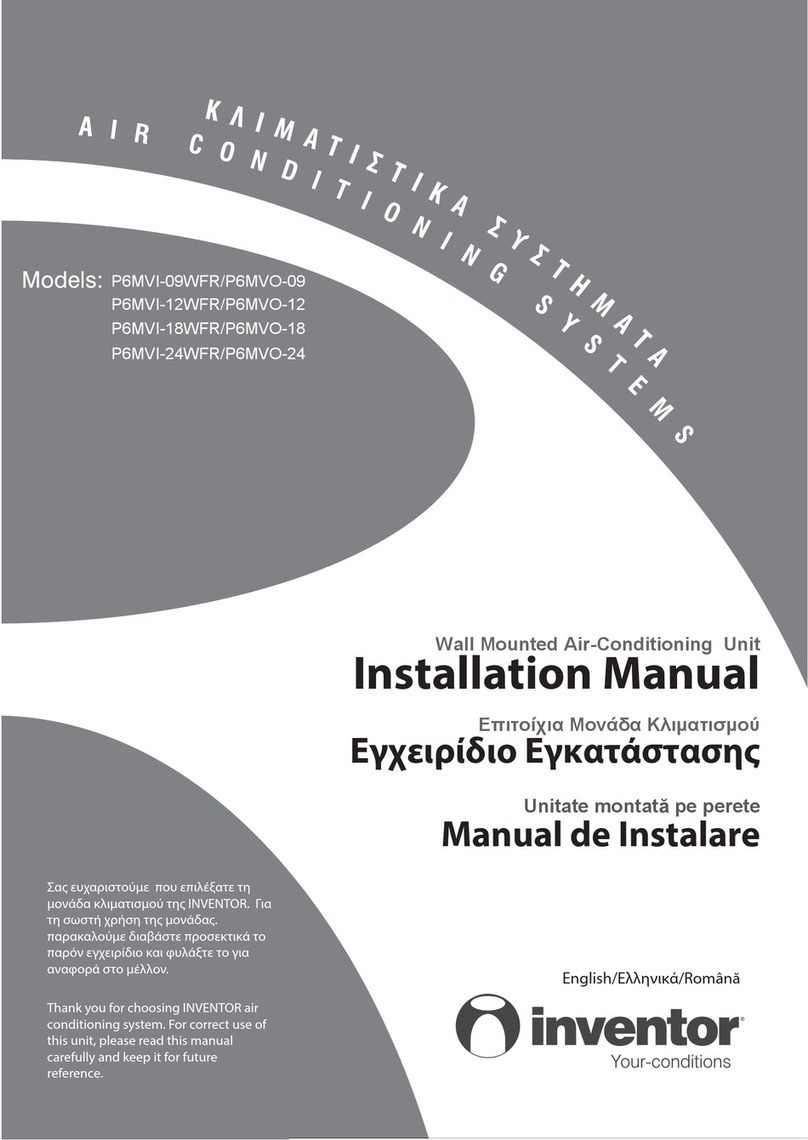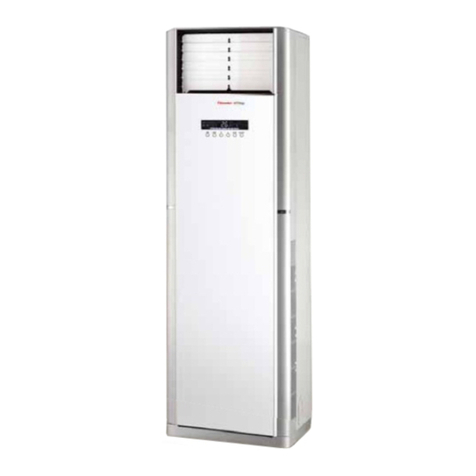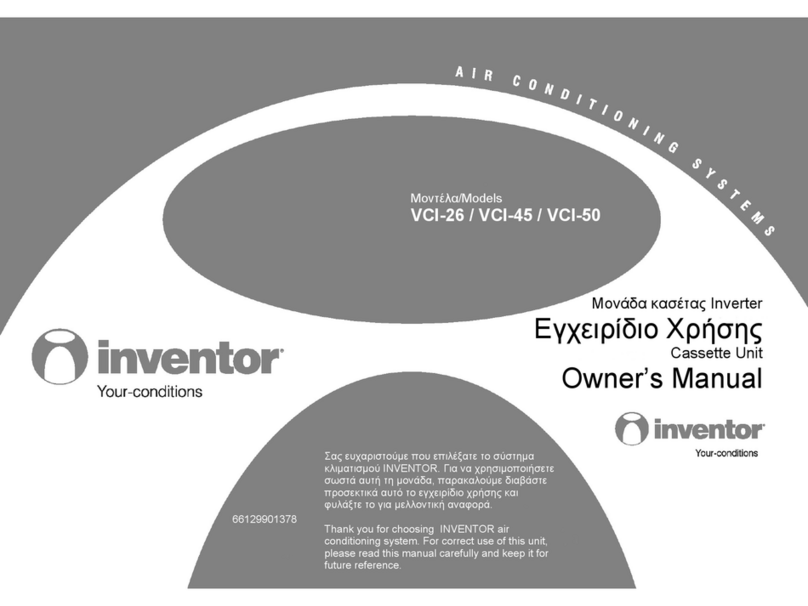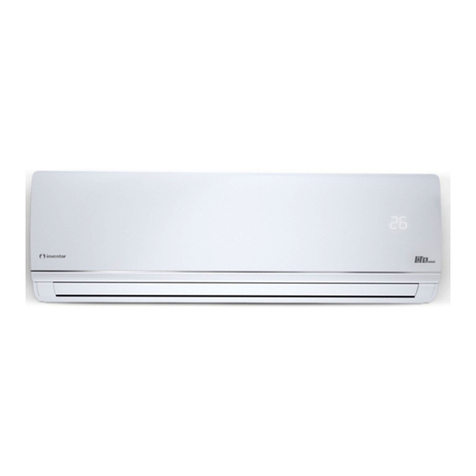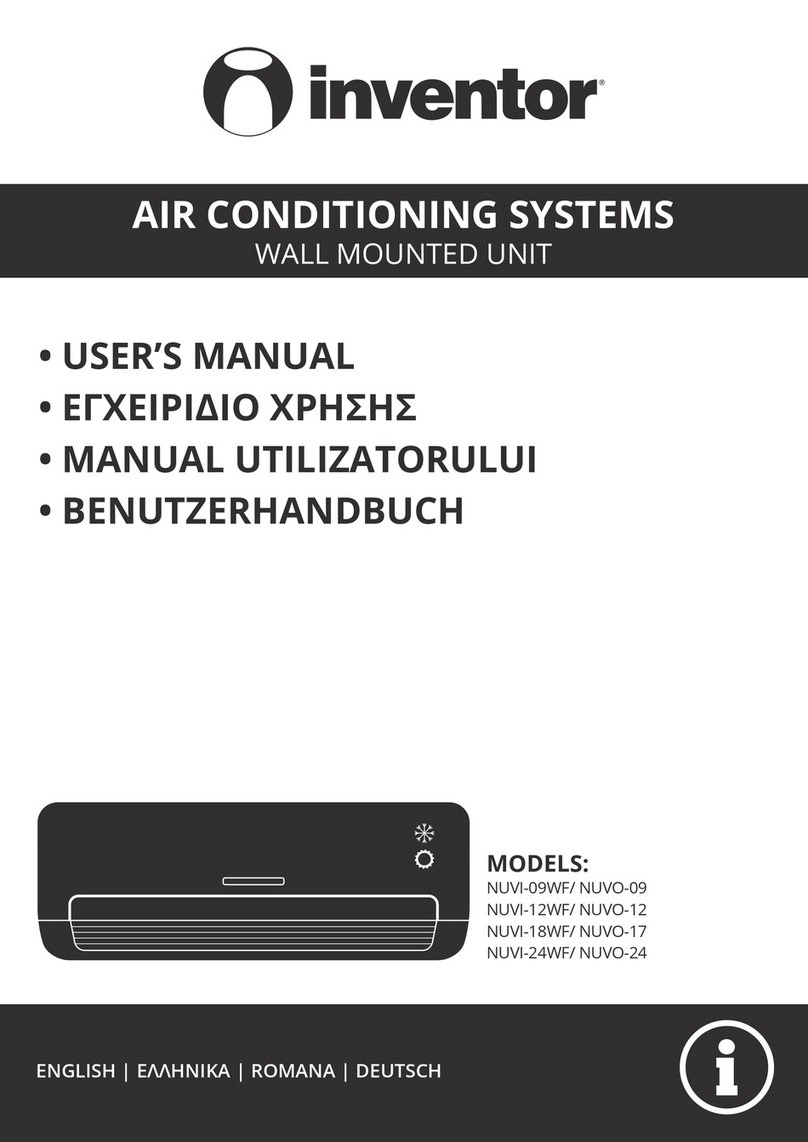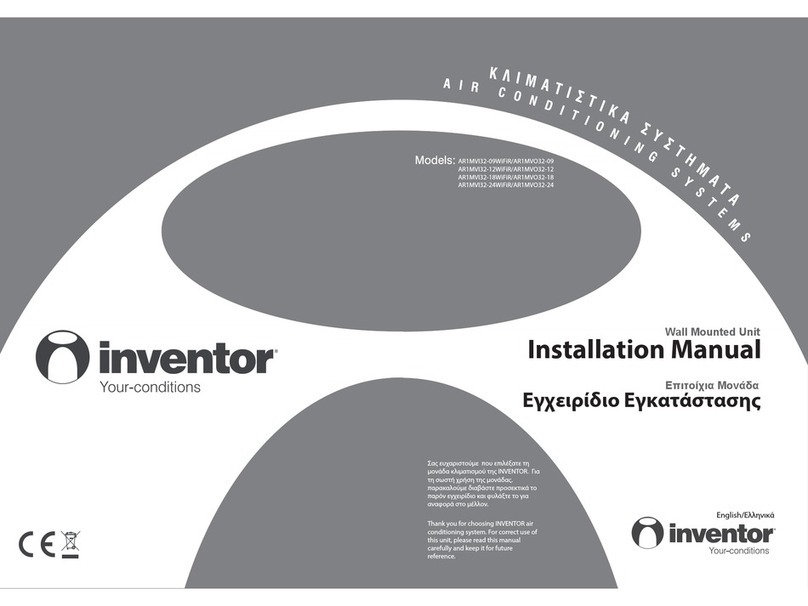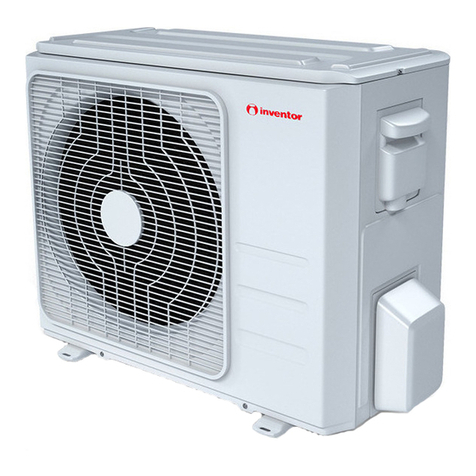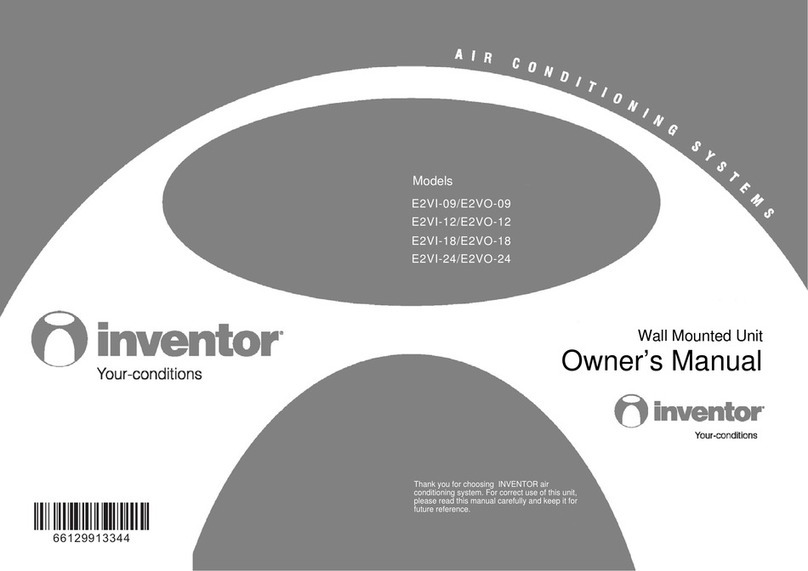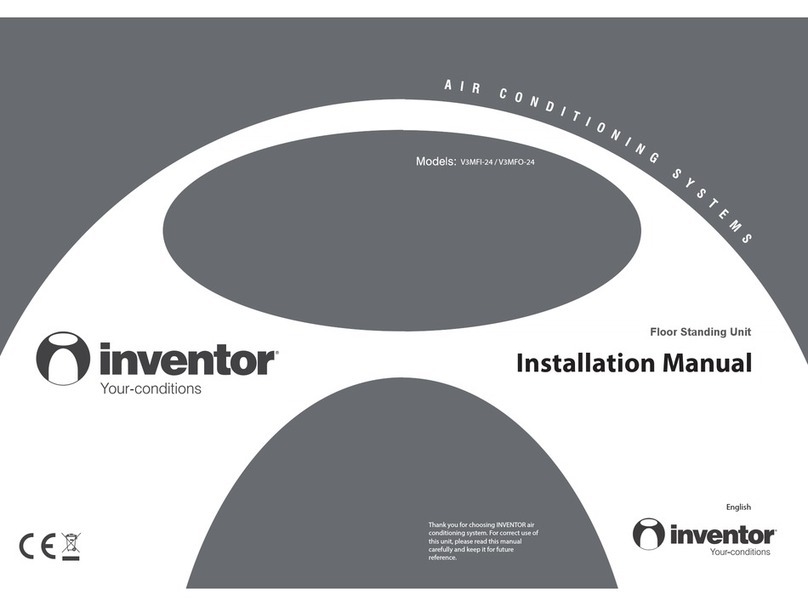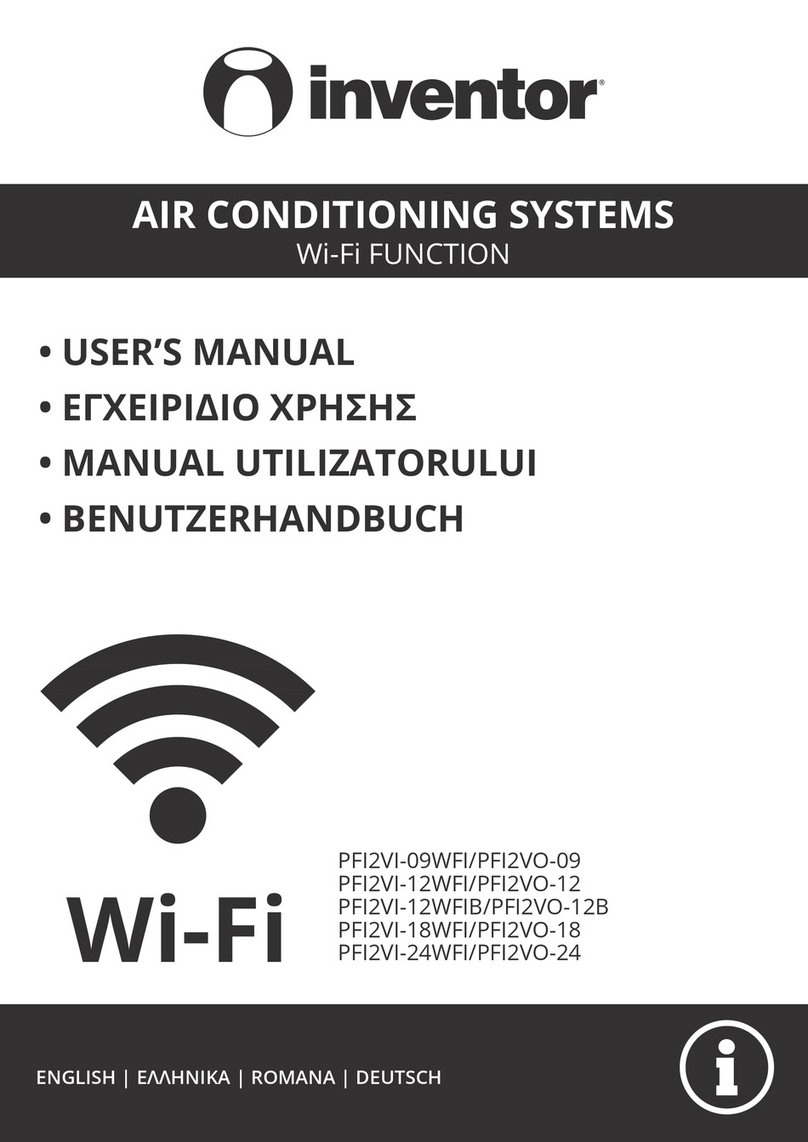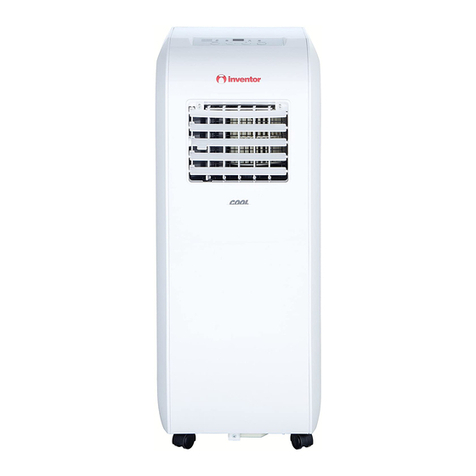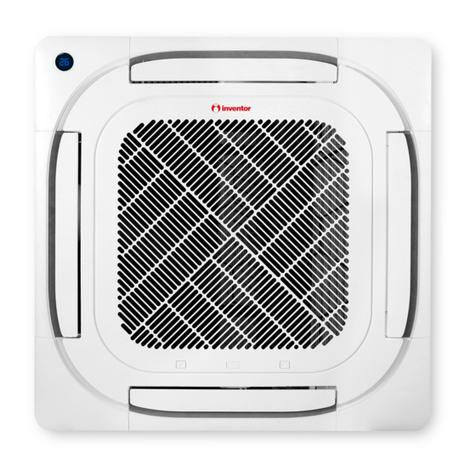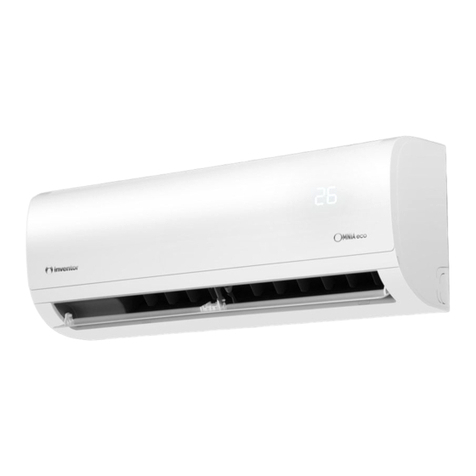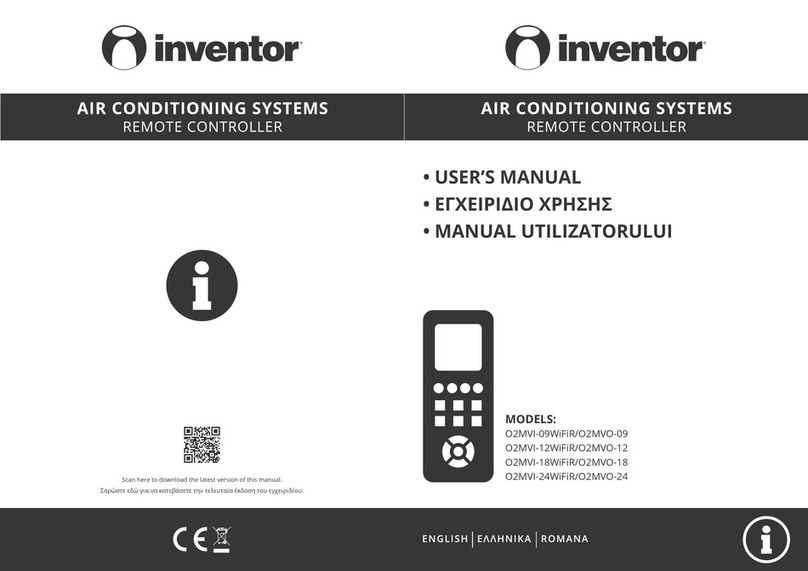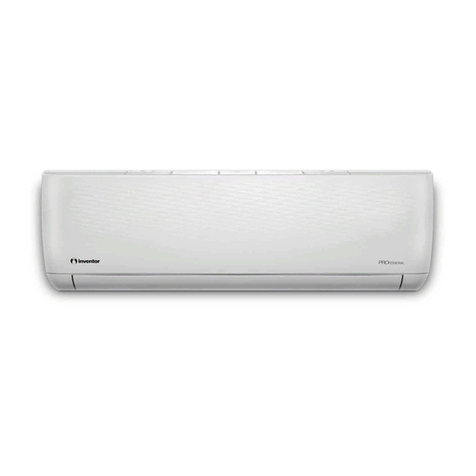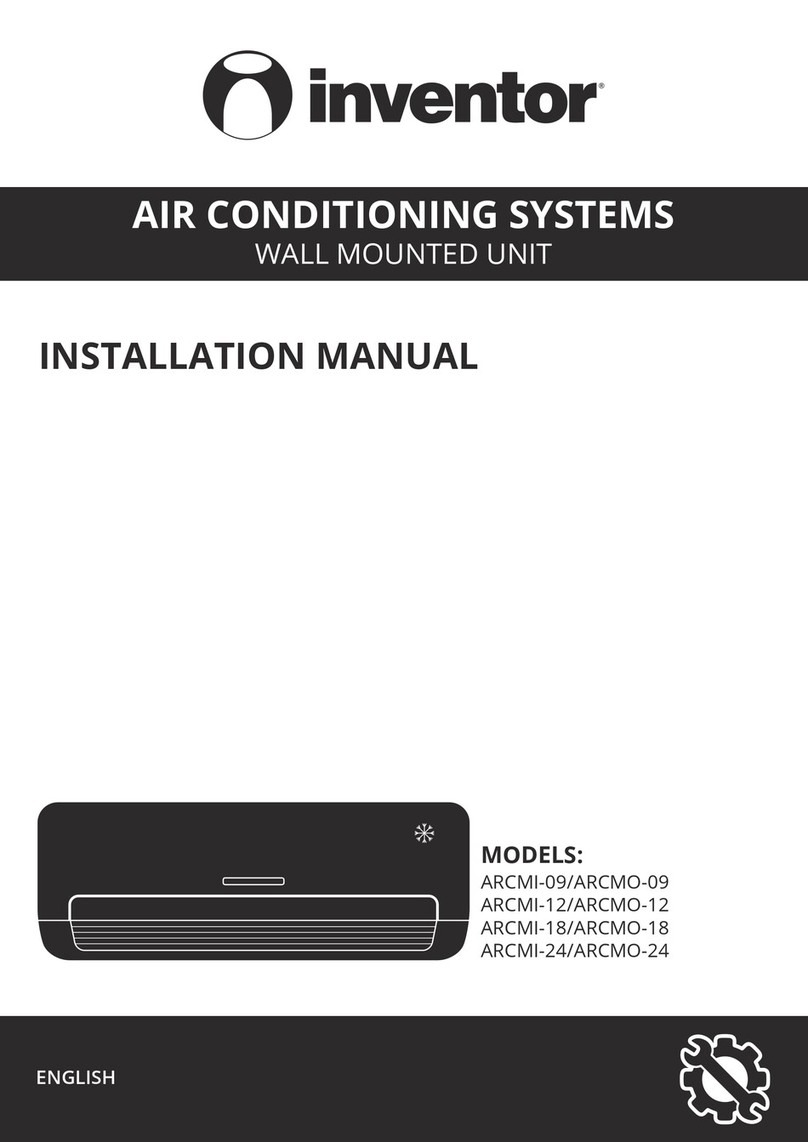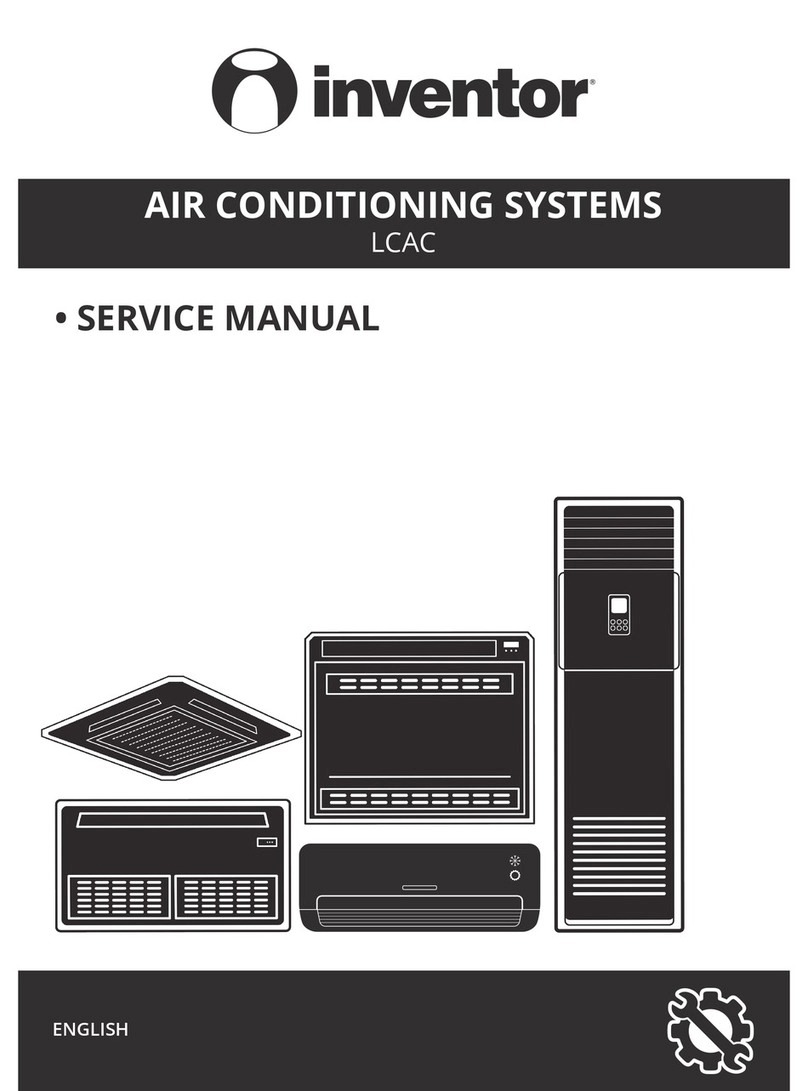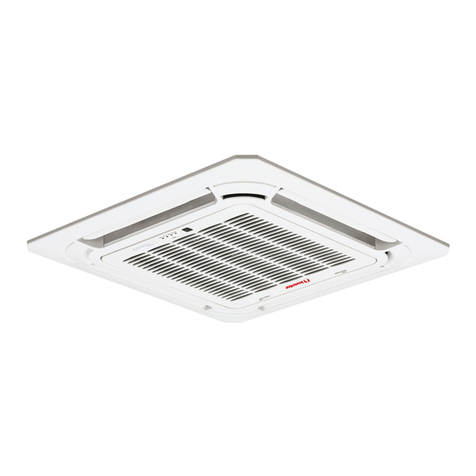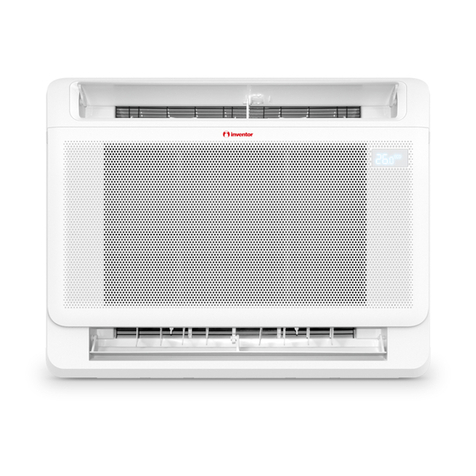
Page 4
Accessories 1
The air conditioning system comes with the following accessories. Use all of the installation parts
and accessories to install the air conditioner. Improper installation may result in water leakage,
electrical shock and fire, or cause the equipment to fail.
Name Shape Quantity
Indoor unit
installation
Installation paper template
(some models)
1
Refrigeration
Fittings
Soundproof/insulation
sheath (some models)
1
Drainpipe
Fittings
Outlet pipe sheath (some
models)
1
Outlet pipe clasp (some
models)
1
Drain joint (some models) 1
Seal ring (some models) 1
Installation
Accessory (some
models)
Ceiling hook
4
Suspension bolt 4
Orifice tube (some units) 1
EMC Magnetic
Ring (some
models)
Remote
controller & Its
Frame (some
models)
Magnetic ring (wrap the
electric wires S1 & S2
( P & Q & E ) around
the magnetic ring twice)
Magnetic ring (Hitch it on
the connective cable
between indoor unit and
outdoor unit after
installation.)
1
1
1
2
1
1
1
1
2
Remote controller
Fixing screw for remote
controller holder ST2.9 x 10
Remote controller holder
Dry battery AAA
Owner’s manual
Installation manual
Remote controller illustration
S1&S2(P&Q&E)
Page 5
Safety Precautions 2
Read Safety Precautions Before Installation
Incorrect installation due to ignoring instructions can cause serious damage or injury.
The seriousness of potential damage or injuries is classified as either a WARNING or CAUTION.
WARNING
• Carefully read the Safety Precautions before installation.
•
In certain functional environments, such as kitchens, server rooms, etc., the use of specially
designed air-conditioning units is highly recommended.
•
This appliance can be used by children aged from 8 years and above and persons with reduced
physical, sensory or mental capabilities or lack of experience and knowledge if they have been
given supervision or instruction concerning use of the appliance in a safe way and understand
the hazards involved. Children shall not play with the appliance. Cleaning and user
maintenance shall not be made by children without supervision.
•
Do not use means to accelerate the defrosting process or to clean, other than those
recommended by the manufacturer.
• Only trained and certified technicians should install, repair and service this air
conditioning unit.
Improper installation may result in electrical shock, short circuit, leaks, fire or other damage to
the equipment and personal property.
• Strictly follow the installation instructions set forth in this manual.
Improper installation may result in electrical shock, short circuit, leaks, fire or other damage to
the equipment.
• Before you install the unit, consider strong winds, typhoons and earthquakes that might affect
your unit and locate it accordingly. Failure to do so could cause the equipment to fail.
• After installation, ensure there are no refrigerant leaks and that the unit is operating properly.
Refrigerant is both toxic and flammable and poses a serious health and safety risk.
Failure to observe a warning may result in death. The appliance must be installed in
accordance with national regulations.
Failure to observe a caution may result in injury or equipment damage.
WARNING
CAUTION
An all-pole disconnection device which has at least 3mm clearances in all poles , and have a
leakage current that may exceed 10mA, the residual current device (RCD) having a rated residual
operating current not exceeding 30mA, and disconnection must be incorporated in the fixed
wiring in accordance with the wiring rules.

